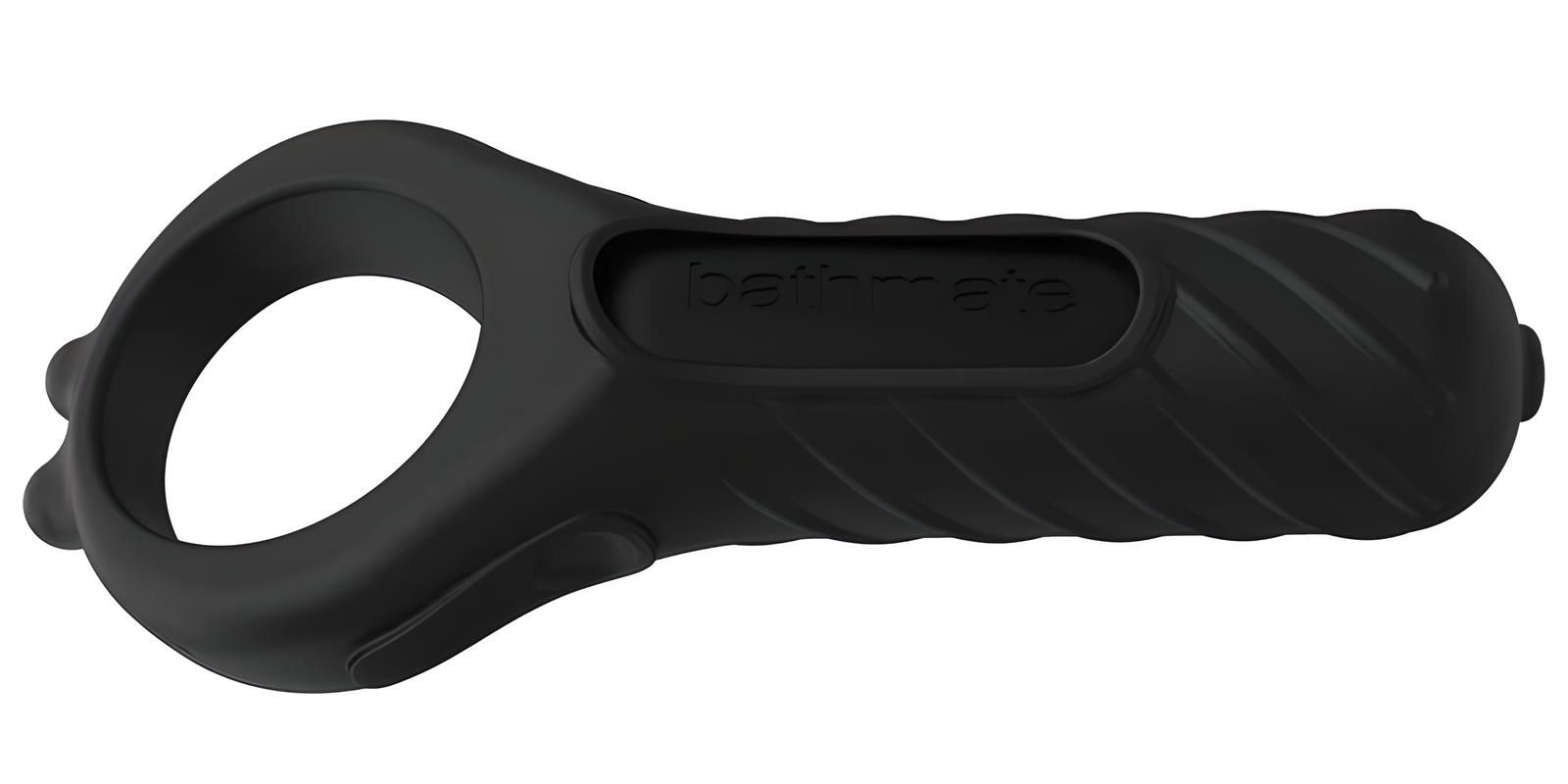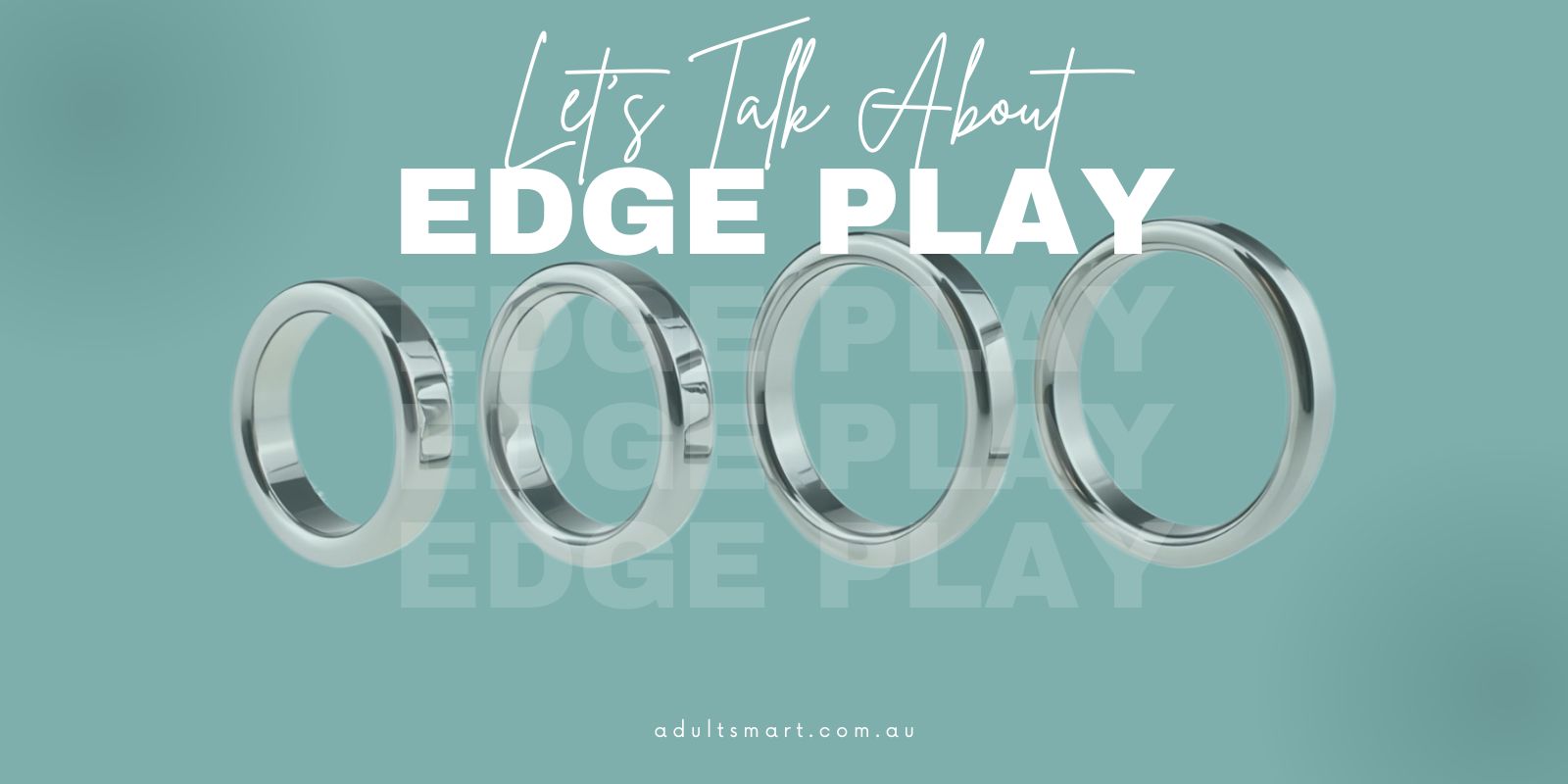What Is Edge Play? Understanding the Risks and Rewards in BDSM
Edge Play can be one of the most controversial and captivating aspects of BDSM. It involves kink practices that push personal, physical, and psychological limits. These are activities that come with real risk, but when approached with care and consent, they can also bring deep emotional and intimate connection.
From breath control and knife play to fire and consensual non-consent, Edge Play is not for beginners. It’s a category reserved for those who understand what they’re doing and why they’re doing it. The draw lies in trust, intensity, and often, the thrill of challenging boundaries in a controlled setting.
This article takes a responsible and respectful look at Edge Play. We’ll cover what it is, why people do it, how to stay safe, and which tools can elevate the experience. We’ll also look at common myths and end with a helpful FAQ for those curious about how to begin safely.
- What Is Edge Play?
- Common Types of Edge Play
- Why People Engage in Edge Play
- Safety First: Understanding RACK
- Communication and Consent
- Why Aftercare Matters
- 2 BDSM Toys That Can Enhance Edge Play
- Myths and Misconceptions
- How to Begin with Edge Play Safely
- Final Thoughts on Responsibility
- FAQs About Edge Play
What Is Edge Play?
Edge Play refers to BDSM practices that are deliberately risky, intense, or psychologically confronting. These are not softcore scenarios. They are boundary-pushing acts that demand full awareness, consent, and responsibility from everyone involved. This makes Edge Play distinct from more mainstream kink practices.
The “edge” in Edge Play refers to the line between control and chaos, comfort and fear, safety and danger. For those who participate, the edge is not about recklessness. It’s about carefully calculated trust. These acts are performed with full understanding of the physical and emotional risks involved.
Unlike casual kink or light bondage, Edge Play includes scenarios where emotional vulnerability is magnified. People often use it to process intense feelings or build extreme levels of trust with a partner. It may appear dangerous from the outside, but to insiders, the emphasis is on choice and preparation.
Because of the higher stakes, Edge Play is never about jumping in blindly. It’s about knowing your limits, communicating them, and having a partner who respects and honours them every step of the way.
Common Types of Edge Play
Edge Play includes BDSM practices that demand heightened focus, skill, and emotional intelligence. These aren’t casual kinks, but carefully structured acts that hold deeper psychological or physical risks. People often misunderstand them from the outside, assuming they are about chaos when they are actually built on control and consent.
Some of the most well-known types of Edge Play include breath control, knife play, fire play, fear play, and consensual non-consent. Each carries distinct risks and emotional triggers. Breath control restricts airflow to heighten sensation. Knife play involves the thrill of danger through sharp implements, often without breaking the skin. Fire play uses fast-burning alcohols or controlled flames skimmed over the skin by trained hands. Fear play introduces controlled psychological stress, while consensual non-consent mimics forced scenarios that are entirely agreed upon beforehand.
Honourable mentions include blood play and electricity play, both of which demand significant experience and thorough safety planning. Regardless of the type, Edge Play requires ongoing communication, education, and a strong sense of personal responsibility from everyone involved.
Why People Engage in Edge Play
The reasons people engage in Edge Play are as varied as the individuals themselves. For some, it’s about the adrenaline rush. The edge heightens everything—touch, breath, emotion—and can unlock powerful states of connection and intensity. For others, it offers a way to surrender or take control in a way that feels deeply validating.
One of the core motivations behind Edge Play is trust. These scenes demand complete transparency and mutual understanding. There’s no room for uncertainty or ego. Partners must work together closely, communicating both their boundaries and their emotional states before, during, and after the scene. When done well, it creates a powerful bond that few other dynamics can match.
For some people, Edge Play is a way to process past trauma or challenge internal fears. It allows them to face discomfort on their own terms, with people they trust and safety measures in place. This type of emotional processing can be empowering, but it must be done with care and should never replace professional support when needed.
It’s also worth acknowledging the role of fantasy. Many people are curious about taboo scenarios but don’t want those things in real life. Edge Play lets them simulate these experiences with full control, giving shape to fantasy in a safe and consensual way.
Safety First: Understanding RACK
Edge Play relies on a deep commitment to safety. That’s where the RACK model comes in—Risk-Aware Consensual Kink. It recognises that some BDSM practices carry real danger, but those risks can be managed through awareness, preparation, and communication. It shifts the focus from trying to eliminate risk entirely to understanding and accepting it responsibly.
RACK differs from the older concept of Safe, Sane, Consensual (SSC). While SSC promotes caution, RACK accepts that what is “safe” or “sane” can be subjective. For experienced players, a knife scene or breath play may be negotiated, practised, and safe in context. That wouldn’t necessarily meet SSC standards, but within RACK, it’s acceptable as long as everyone understands the risks and consents freely.
No one should ever feel pressured into Edge Play, no matter how experienced their partner is. RACK puts the responsibility squarely on both parties to communicate clearly, do their homework, and never ignore red flags. It’s not a pass to do reckless things—it’s a framework for smart, respectful, and ethical kink.
Communication and Consent
Without communication and consent, Edge Play should not happen. These practices depend on constant dialogue, not just in planning but throughout the entire experience. Negotiation begins long before any physical contact. It involves sharing limits, triggers, medical concerns, and emotional needs with total honesty.
A well-negotiated scene will include boundaries on what is allowed, what is off-limits, and what language or tools are acceptable. This is also the time to agree on safe words or non-verbal cues, which allow either person to pause or stop the scene immediately. Consent isn’t just about saying yes—it’s about understanding exactly what that yes includes.
During the scene, partners often use short check-ins or eye contact to maintain connection. While this can be subtle, it is a vital form of ongoing consent. When emotions run high, checking in ensures that both people are still engaged and supported.
Edge Play requires consent that is informed, enthusiastic, and specific. If anyone feels unsure or pressured, that’s a signal to step back and talk it through. Trust is earned scene by scene, and good communication builds a foundation that makes even the most intense play safe and respectful.
Why Aftercare Matters
Aftercare is an essential part of BDSM, and it becomes even more important with Edge Play. These scenes can take a physical or emotional toll, even when they go well. Aftercare is how partners reconnect, stabilise emotions, and tend to any physical effects from the scene.
What aftercare looks like varies from person to person. It can involve cuddling, hydration, quiet time, reassurance, or checking for bruises and burns. Some people may need emotional processing, while others just want to be held or left alone for a moment. The key is asking your partner what they need and following through with care and intention.
Good aftercare helps prevent misunderstandings, emotional drop, and regret. It’s not just about softening the impact of a rough scene—it’s about closure, connection, and respect. With Edge Play, this step is never optional and should always be tailored to the individual, not just the activity.
2 BDSM Toys That Can Enhance Edge Play
Toys can add precision, intensity, or novelty to any kink scene. In the context of Edge Play, the right toy enhances control while allowing partners to focus on safety and connection. It’s important to choose gear that aligns with your skill level and scene intention.
Below are two BDSM toys that can complement Edge Play practices. They are best used by people with some experience and a strong understanding of boundaries and communication. Always read product instructions and clean tools properly between uses.
Bathmate Vibe Edge Head Tickler
The Bathmate Vibe Edge Head Tickler is a versatile stimulation toy that combines vibration and sensory focus. Its narrow shape allows for teasing, edging, and precision play. This toy works well in scenes involving light sensation play or fear play where the focus is on anticipation and build-up.
For those involved in Edge Play, it can heighten sensitivity without leaving marks or overwhelming the senses. Use it along the neck, thighs, or inner arms as a way to amplify tension and control.

Kiiroo Keon Combo Set with Automatic Stroker
The Kiiroo Keon Combo Set with Automatic Male Stroker offers interactive stimulation with rhythm-based motion. It’s often used in control-based dynamics, especially when one partner is handling the toy remotely or setting conditions for use.
This toy is ideal for edging, orgasm denial, and submission-based scenes. For Edge Play, it brings in an element of power exchange with the added twist of automation and remote control. This makes it useful in both partnered and solo scenarios.

Myths and Misconceptions
Edge Play is often misunderstood by those unfamiliar with the principles of BDSM. From the outside, these scenes can look extreme or even dangerous. The biggest misconception is that Edge Play equals abuse. In reality, these acts are deeply consensual and governed by strict communication, boundaries, and ethics.
Another myth is that people who enjoy Edge Play are reckless or damaged. This couldn’t be further from the truth. Most participants are highly informed and deliberate in how they plan and carry out scenes. They often spend hours preparing, learning, and debriefing—all to ensure safety and mutual satisfaction.
It’s also incorrect to assume that all Edge Play involves physical pain or fear. Some scenes are psychological or emotional, focused on vulnerability or control. The diversity of Edge Play reflects how nuanced human intimacy and trust can be when both partners are clear and aligned in purpose.
How to Begin with Edge Play Safely
Starting with Edge Play requires more than curiosity. It calls for education, patience, and a deep respect for both your own boundaries and your partner’s. This isn’t a part of BDSM to rush into. Instead, it’s something you ease into over time with clear intent and the right mindset.
Begin by reading reputable resources or seeking out workshops led by experienced practitioners. Online forums and kink-aware therapists can also provide guidance. If you’re curious about a particular type of Edge Play, learn the techniques and safety protocols first. Never try to improvise with activities like breath control or fire play.
Finding a mentor or connecting with experienced community members can help. They may offer scene demos or answer questions you can’t easily research. Starting small is always better. Short scenes, with minimal risk, allow you to build trust and gain confidence before moving deeper into the dynamic.
No matter how you begin, check in constantly with your partner and yourself. Preparation doesn’t end once the scene starts. The best Edge Play comes from a foundation of learning, communication, and mutual respect.
Final Thoughts on Responsibility
Edge Play is not just about thrill or control—it’s about trust, preparation, and ethical responsibility. Every scene is a shared experience built on clear agreements and deep respect. That responsibility doesn’t stop when the play ends. It continues through aftercare, feedback, and ongoing learning.
Mistakes can happen, even with the best intentions. What matters is how they’re handled. Honest conversations, apologies when needed, and a commitment to improve are all part of responsible kink. No one is born knowing how to navigate Edge Play—it’s a skill that’s refined over time.
At its best, Edge Play strengthens connection and reveals a depth of vulnerability that few other experiences can match. It isn’t for everyone, and that’s okay. But for those who choose it with care, it offers a powerful way to explore trust, control, and shared intensity.
FAQs About Edge Play
Is Edge Play legal?
In many places, consensual BDSM is not explicitly illegal, but Edge Play exists in a legal grey area. Activities that risk bodily harm or appear non-consensual may attract legal scrutiny, even when fully agreed upon. It’s important to understand local laws and practice with discretion.
Can beginners try Edge Play?
Beginners should focus on building communication skills and learning foundational BDSM before attempting Edge Play. It’s best approached after gaining experience, education, and trust with a partner. Start small, learn from reliable sources, and never attempt advanced play without preparation.
How do I know if I’m ready for Edge Play?
You’re ready when you can communicate clearly, set and respect boundaries, and prioritise safety without compromise. Emotional readiness is just as important as physical interest. If you feel uncertain or unable to speak up, it’s better to wait and continue learning.
What’s the difference between Edge Play and abuse?
The difference is sexual consent. Edge Play is negotiated, informed, and agreed upon by all involved. Abuse lacks consent and usually involves manipulation, coercion, or disregard for boundaries. Responsible players always prioritise communication, safety, and the option to stop at any time.
Do I need special tools or equipment?
Not always. Some forms of Edge Play require tools like knives or fire implements, but others rely on psychological intensity or emotional dynamics. When tools are involved, they should be high quality, well-maintained, and used with skill and understanding.

Discover Tiffany’s journey! Sexologist, passionate writer, & educator exploring kink, sex, and pleasure. Enjoy her insightful reads on the Adultsmart blog!








Leave a Reply